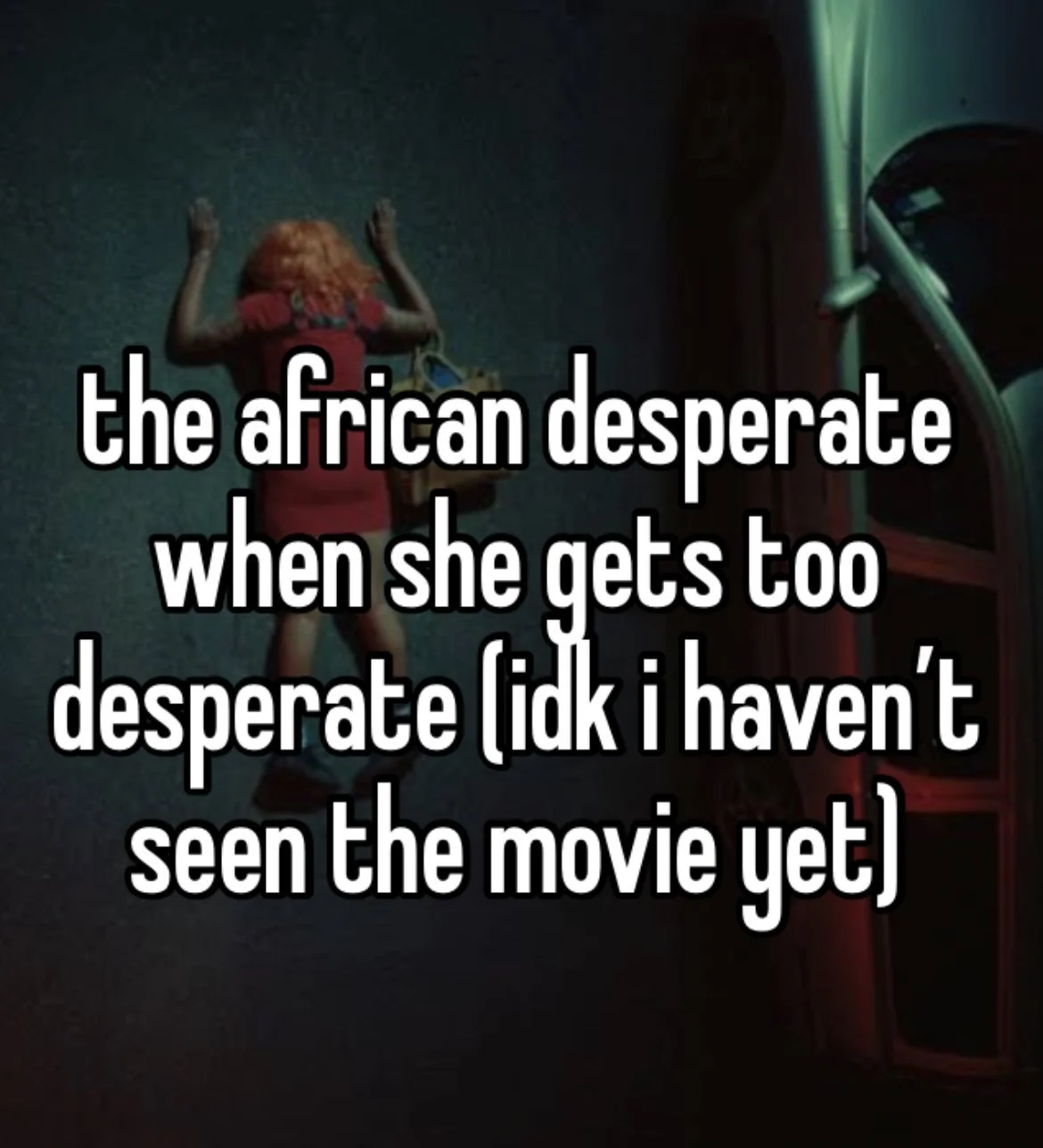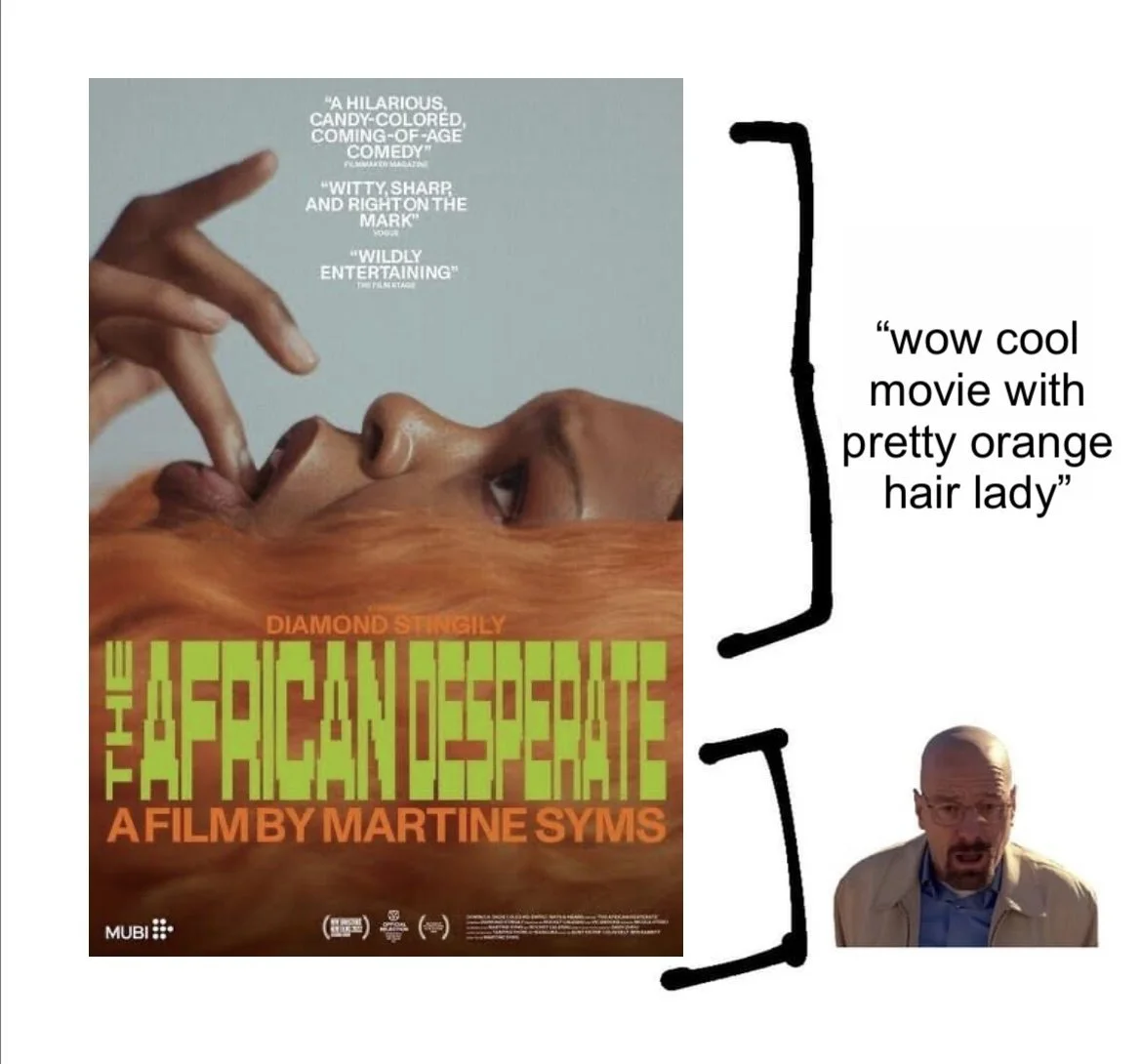How Memes Have Become Their Own Language - In The African Desperate and Beyond
Memes have become a language; something society has sought to eschew since its foundation. Flippant, easily digested, yet a powerful and discursive communication and archive of contemporary sensibility. Martine Syms uses this language to take the farce of art world satire and makes it relatable, the day in the life format. Providing our daily thoughts and predilections becomes part of the daily human experience as we post, TikTok and gram our personal traumas, comedies, achievements, loves and losses for the world to see; an archive.
The dialogue of the internet allows us to feel included in this story. THE AFRICAN DESPERATE acts as a direct reflection of Sym’s artistic practice, which has long explored performativity, using her subjects as a showcase of the ways we ‘act’ across film, installation, and writing.
From the off, we are introduced to the complexities of our lead. Despite some skepticism from the board about the figurative nature of her work, fictional Palace is a sculptor - and an aquarius - awarded an MFA and this supposed shocker is the first of many to come in a hysterical series of events. As we follow the frenetic hours Palace - played by long time Syms collaborator Diamond Stingily - encounters during her time at the allegorical school in NYC Hudson Valley, the surreality of this series of misfortune are softened by the soft glow, almost like an Instagram filter or a sparkling Tumblr-era haze. The African Desperate speaks vividly to the holes within the arts systems set up generations prior, and questions how the new generation can best tackle the limitations set upon them, naturally pointing to the need for change.
We begin this manic 24 hours with a front seat to the M.F.A review of aspiring artist Palace, played by artist Diamond Stingily. Syms’ choice to use a hands-on creative as the lead, who has her own dynamic practice that explores similar themes to her own work, allows for a realness to the often overdone portrayal of the ‘artist’, typically consistently covered in paint and solely wearing dungarees. The film was set at Bard College campus, where Syms herself recovered her MFA. The personal becomes the real - there is so much Syms in this Syms.
Syms takes the day-in-the-life format and fills the 24 hours with multiple, complex narratives that easily lend themselves to imagining these stories outside of the single day we are presented with. We follow Palace as she tries to make her way home to Chicago instead of going to her graduation party - which she inevitably ends up attending - with a string of events heavily tied to drugs, partying, and reckless decision making. The entire movie seems to ‘meme’ the contemporary experience of being young today while also addressing the subsequent virality of this aesthetic.
As indie sleaze encroaches in, providing an unsettlingly recent sense of deja vu for those born in the 90s, it is easy to wonder how foundational meme culture, and its Tumblr/MySpace predecessors, have been in communicating culture, creating zeitgeist and ultimately become commodity. How do disaster and social ills become shareable content and where does the line get drawn between a fast-paced consumption of culture and its exploitation for aesthetic? When the ‘Confused Black Girl’ meme flashes in Syms’ film - what does that say about the legacy of the Black female image, their receptibility in visual culture and the long-lasting hangover of eugenics that still lingers on in corners of ideology when you scratch the surface.
Seeing, as John Berger puts it, comes before words. This is the Pictures Generation 2.0 – as society craves the constant and profuse pictorial elucidation of events. When Roland Barthes questioned the idea of originality and authenticity in his manifesto, The Death of the Author, he inadvertently inspired the loose knit group of artists who made the analysis of their relationship with popular culture and mass media their modus operandi. Cindy Sherman played dress up, Richard Prince deconstructed mass consumerism with his pictures of cowboys lifted from adverts. Syms investigates how we see the world, the nuanced trappings of the art world itself whilst exploring themes of emotional survival. Syms embraces the contradictory and holds herself accountable to it, which mirrors the youth discussion of today.
“The circulation, proliferation and meme-ification of these ideas hold ourselves accountable to the universality of experience as well as the personal allegiances we have to existing in a certain socio-political moment in time.”
These discussions are laid bare on the interim - as we parody society, the art world, ourselves, our messiness. Memes and internet satire sit in a completely non-neutral space. When understanding the motivations of this culture, and its allegiances to Black subjectivity, personhood and the ever-complicated notions and fault lines of class, gender, race - the execution through this ideology is interesting because it allows us to further investigate the language that we use to express our distaste, troubles and traumas, and dig deep into an archive of collective memory and knowledge. The circulation, proliferation and meme-ification of these ideas hold ourselves accountable to the universality of experience as well as the personal allegiances we have to existing in a certain socio-political moment in time.
The narcotic-fuelled swagger of a cautionary tale that Syms delivers sees a Black woman artist break free from the ivory tower. When put inside Palace’s own subjectivity, we experience our own - a key function of meme culture itself.
Words: Aindrea Emelife | Memes: @arthouseshitposting
To celebrate the release of Martine Syms’ debut The African Desperate on MUBI, we're inviting Polyester readers to sign up to the site to watch The African Desperate – and all their other films! – with 30 days of MUBI for free.


